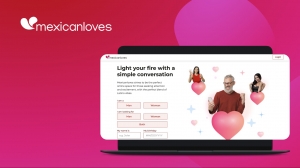Easter, a time of renewal and celebration, provides a unique canvas for advertisers to blend creativity with tradition. This springtime festival, steeped in religious and cultural significance, offers a plethora of themes and symbols that can be leveraged to craft compelling advertising campaigns. From the whimsical charm of Easter bunnies and egg hunts to the profound messages of rebirth and hope, Easter advertising has evolved into a multifaceted strategy that captures the essence of the holiday while engaging consumers in innovative ways.
The Evolution of Easter Advertising
Easter advertising has come a long way from its humble beginnings. Initially, it was largely confined to promoting Easter-specific products such as chocolate eggs, bonnets, and religious paraphernalia. However, as the holiday became more commercialized, the scope of Easter advertising broadened significantly. Today, it encompasses a wide range of industries, including fashion, food and beverage, travel, and even automotive sectors. This evolution reflects the growing importance of Easter as a commercial event, akin to Christmas or Valentine's Day, albeit with its unique flavour.
Symbolism and Themes in Easter Advertising
At the heart of Easter advertising lies a rich tapestry of symbols and themes that resonate deeply with consumers. The Easter bunny, perhaps the most ubiquitous symbol, is often used to evoke a sense of joy and playfulness. This character can be found in various forms, from animated mascots in television commercials to costumed figures in in-store promotions. The Easter egg, symbolizing fertility and new beginnings, is another powerful motif. Advertisers use it not only to promote confectionery but also as a metaphor for unveiling new products or ideas.
Religious themes also play a significant role, especially in regions where Easter is celebrated primarily as a Christian holiday. Advertisements during this period often include subtle references to resurrection and renewal, appealing to the spiritual sentiments of the audience. These messages are usually crafted with sensitivity, ensuring they do not alienate non-Christian consumers while still honouring the holiday's origins.
Creative Strategies for Engaging Consumers
Modern Easter advertising campaigns are a testament to the boundless creativity of marketers. One effective strategy is the use of storytelling, where brands weave narratives that connect emotionally with their audience. For instance, a chocolate brand might create an ad campaign featuring a heartwarming story of a family coming together to celebrate Easter, highlighting the joy of sharing and togetherness. This not only promotes the product but also reinforces positive associations with the brand.
Interactive campaigns have also gained traction, especially with the advent of digital media. Virtual egg hunts, augmented reality experiences, and social media contests are popular ways to engage consumers and create buzz around a brand. These campaigns often encourage user-generated content, fostering a sense of community and participation.
In addition to digital strategies, experiential marketing remains a powerful tool for Easter advertising. Pop-up shops, Easter-themed events, and in-store promotions offer consumers a tangible connection to the brand. These experiences are designed to be memorable, ensuring that the brand remains top-of-mind long after the holiday has passed.

The Role of Social Media and Influencers
Social media has revolutionized the way brands approach Easter advertising. Platforms like Instagram, Facebook, and TikTok offer unprecedented reach and engagement opportunities. Brands leverage these platforms to launch teaser campaigns, share behind-the-scenes content, and engage with consumers in real time. Hashtags such as #EasterGiveaway or #EasterBunny become rallying points for consumers, driving participation and amplifying the campaign's reach.
Influencers play a pivotal role in this ecosystem. Collaborating with popular influencers allows brands to tap into established audiences and adds a layer of authenticity to their campaigns. Influencers often share personalized content, such as Easter recipes, DIY decoration tips, or unboxing Easter-themed products, seamlessly integrating the brand into their lifestyle content. This approach not only enhances brand visibility but also builds trust and credibility among consumers.
Measuring the Impact of Easter Advertising
As with any marketing initiative, measuring the impact of Easter advertising is crucial. Key performance indicators (KPIs) such as engagement rates, conversion rates, and return on investment (ROI) provide valuable insights into the effectiveness of a campaign. Brands use a combination of analytical tools and consumer feedback to refine their strategies and ensure they resonate with the target audience.
Moreover, the success of an Easter advertising campaign is often reflected in its ability to drive not only immediate sales but also long-term brand loyalty. A well-executed campaign can create lasting emotional connections, encouraging consumers to associate positive feelings with the brand throughout the year.
Conclusion
Easter advertising is a dynamic and multifaceted field that beautifully blends tradition with modernity. It offers brands a unique opportunity to connect with consumers on an emotional level, leveraging the rich symbolism and themes associated with the holiday. Through creative storytelling, interactive experiences, and strategic use of digital media and influencers, brands can craft memorable campaigns that resonate deeply with their audience. As Easter continues to evolve as a commercial event, the future of Easter advertising promises even greater innovation and engagement, ensuring that this springtime celebration remains a vibrant and joyous occasion for all.






